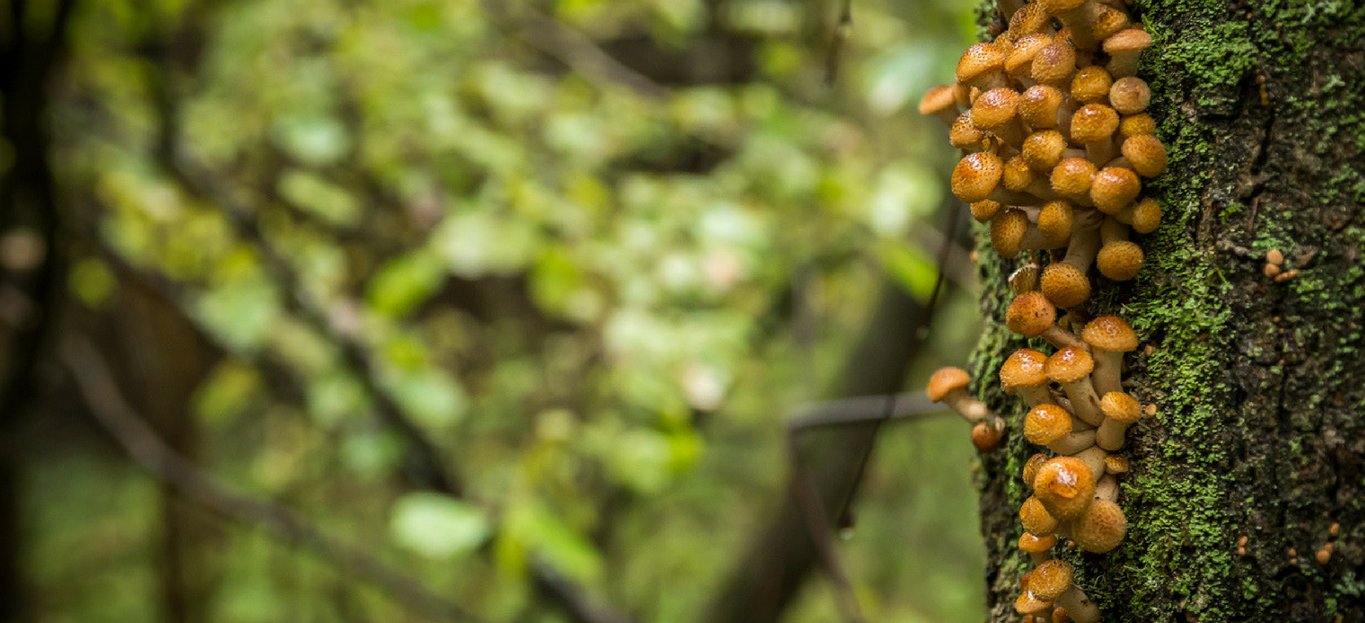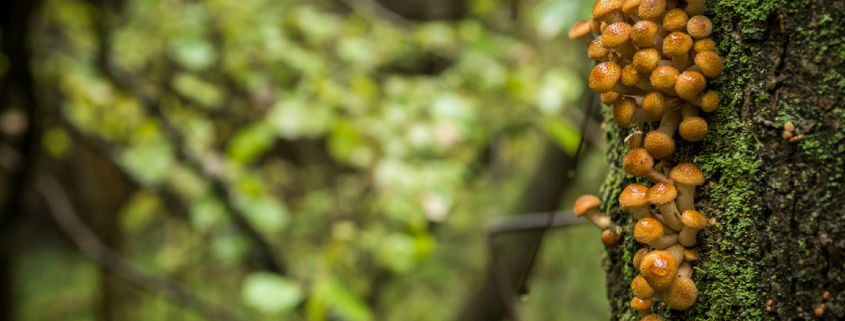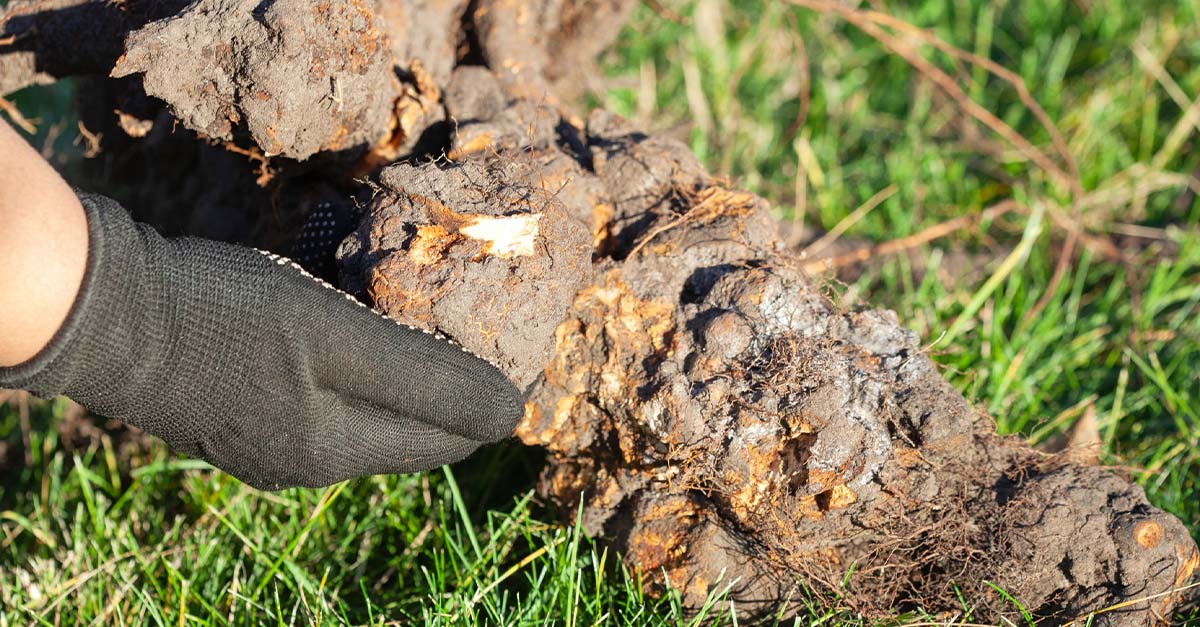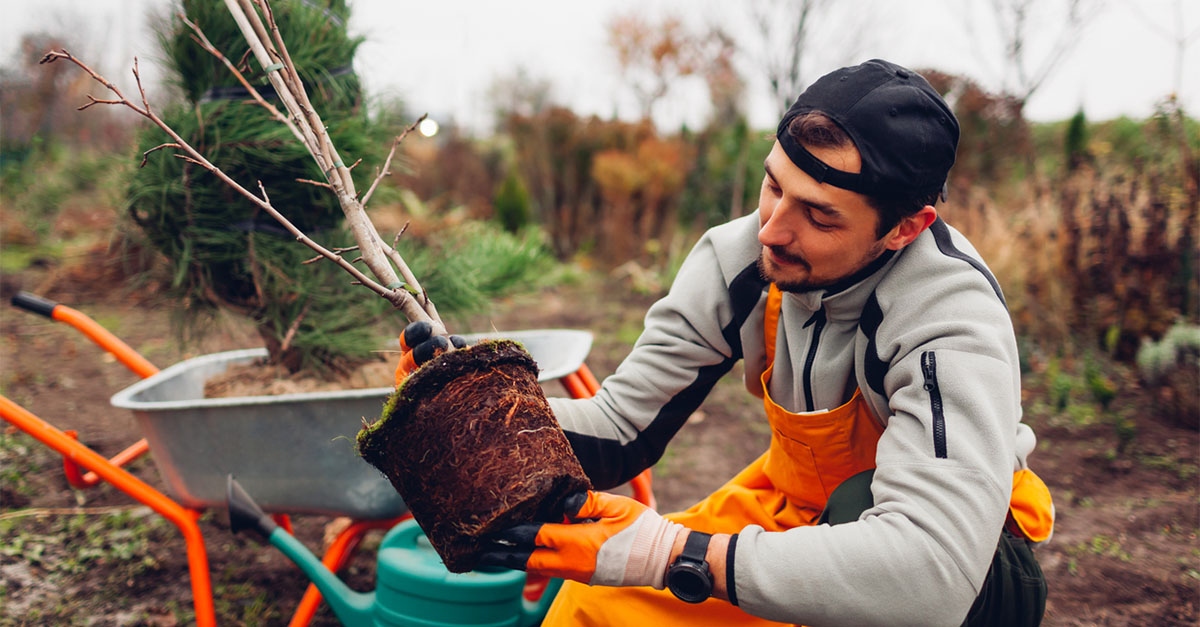Goodbye Root Rot: 4 Approaches to Aid in Your Armillaria Attack
Cute little mushrooms often bring a smile to our faces … fairy rings and magic and all that! Yet before you get lost in fantasy, here’s a sobering reality for you: Those wee mushrooms may be a sign of terrible stress to your trees and shrubs.
That’s because they’re often the most visible sign of Armillaria mellea, a genus of 10 root-devouring fungus species. Collectively, they are known as honey fungi, a name that’s also much sweeter than the reality.
Because Armillaria can feed on dead as well as living wood, it can take out trees very quickly; it has no need to keep them alive to keep “feeding.” Not cool, root rot!
Obviously, you need a plan of attack to ensure root rot doesn’t hurt your trees and shrubs. Here are four steps to take if you see root rot in your neighborhood.
1. Recognize the Signs
Mushrooms aren’t the only sign of root rot, which causes people to miss the presence of armillaria until it’s too late. Initial signs include branch dieback and crown thinning, cankers on exposed roots, more resin than usual coming from the bark, and white or brown rotting on external surfaces. If you cut the roots open, you’ll see clear evidence of rot.
2. Understand the Spread
Armillaria is technically the world’s largest organism because of its ability to spread clonally underground through rhizomes. (Not to be confused with Pando, the largest single organism in existence, and final proof that trees are the coolest. Mic drop.)
Anyway, these impressive rhizomes mean root rot can spread between infected trees that are still alive, but more troublingly, it can also pass from a dead tree to a live one. That means leaving dead trees or stumps in place too long can damage your living trees. It’s important you dig them out, and surrounding areas, right away.
3. Keep Trees Happy
Just like people, trees are more prone to infection when they’re stressed and their immune system can’t rally as effectively. Trees need proper care, such as mulch to protect their roots and fertilization in their first few years. Deal with other diseases quickly, and be sure to prepare them for the stressors of summer.
4. Deal with Water
Standing water makes root rot spread, so make sure you get ready for summer storms by creating swales to catch and funnel rain to appropriate parts of the yard – such as lawns or wildflower areas – and keep it away from tree roots.
If you need more help, especially with the removal of diseased trees or stumps, feel free to call Premier Tree Solutions. Our experts would be happy to help you deal with any infected trees and take good care of your still-healthy babies. Contact us here today or give us a ring at 404-252-6448.










